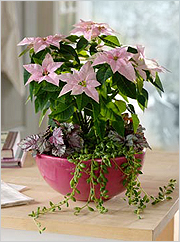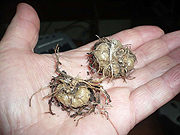What is dormancy period, and do plants need it?

Why do some houseplants bloom in winter, while others cease their growth and shed leaves in autumn? There are many types of houseplants known to bloom throughout the year, even in winter with sufficient lighting, for example, African violets.
Moreover, many species slow down their growth at the end of autumn, rarely producing new leaves during winter but retaining their decorative appeal.
There are also houseplants that shed all their leaves at a certain time of the year. Inexperienced beginners might discard these plants, assuming they have perished, while experienced gardeners know that the plant has simply entered dormancy until spring.
What is dormancy period in houseplants?
Dormancy in plants is a state where most physiological processes in the plant are halted, and some cease entirely. Shoot and leaf growth stop, and flowers do not appear.
Why do some plants have a dormancy period while others don't?
In the wild, plants adhere to specific cycles: day alternates with night, and summer with winter. With the changing seasons, temperature and day length vary. As temperatures drop, perennial plants cease their growth, shed their leaves, and go dormant until spring. In spring, they sprout leaves, new shoots, and flowers, and fruits ripen, all part of the vegetative period.
In regions with moderate latitudes and subtropics, these cycles are pronounced.

In the tropics, where there is summer year-round and no significant temperature fluctuations, there may be periods of drought and rainy seasons.
Among indoor plants are those from humid tropical forests, where temperature and humidity remain constant. Typically, these plants, like monsteras, alocasias, dieffenbachias, most bromeliads, tradescantia, and cyperus, do not have a clearly defined dormancy period in domestic conditions.
Subtropical plants often slow their growth in winter but do not shed leaves. This shallow dormancy period is typical for citrus trees, laurels, myrtles, camellias, fuchsias, hibiscus, and abutilons. Indoor palms also fall into this category.
Many subtropical plants bloom abundantly after a period of dormancy in a cool room with temperatures of 14-18 degrees Celsius and minimal watering. If kept in a warm room during winter, constantly fertilized and watered, their flowering may be weak or absent altogether.
There are also plants that require a mandatory dormancy period throughout the year (orchids, tuberous begonias, gloxinias, caladiums, achimenes, cyclamens, pomegranates, poinsettias). In nature, these are often plants with a short vegetative period. With the arrival of the rainy or warm season, they quickly develop leaves, flower, and after a short period of seed ripening, the above-ground part of the plant dries out.

Plants in this group usually have thick tubers or rhizomes. They poorly tolerate the absence of dormancy, and some may simply perish. Deep dormancy is typical for almost all bulbous and tuberous plants. Usually, their foliage completely falls off. Almost all amaryllidaceae require a deep dormancy period. Bulbs are stored in pots or boxes with sawdust, dry peat, in a dark and cool place. The temperature requirements vary for different plant species.
It can take a long time for amaryllises to bloom in indoor conditions. Even with large bulbs, good soil, and regular fertilization, they may not flower! The reason is the lack of dormancy period. It is during this time that the flower buds form.
How to properly care for a plant during dormancy?
To induce dormancy in a houseplant, all fertilization should be stopped, and watering should gradually be reduced. In winter months, plants are watered very little and not sprayed. It is desirable to provide cool conditions.
For deep dormancy, watering is gradually stopped completely. Usually, pots with tubers and bulbs are kept in darkness. The substrate should be dry. However, it should be remembered that at high temperatures and excessively dry air, bulbs may dry out, especially if they are small.
How to bring a plant out of dormancy?
Usually, as the daylight hours increase, plants naturally awaken. Young leaves and shoots develop. Shoots appear on the bulbs, signaling that they need to be planted in pots and moved to the light. Watering is gradually increased, and it's advisable to move the plants to a sunny window. Early spring sunshine for a few hours won't harm even delicate indoor plants.
If a plant is slow to awaken, it can be very helpful to water it with warm water. Warm showers (with water temperature around 40 degrees Celsius) can be beneficial for some palms and orchids. How to force a plant to bloom in winter?
Very often, in the floriculture industry, the flowering period of indoor plants is artificially regulated using a shifted dormancy period. Sales increase during Christmas, so cyclamens, azaleas, and poinsettias should bloom precisely at that time. To achieve this, the dormancy period is extended or shortened using watering, lighting adjustments, and temperature regulation.
To induce winter flowering in some houseplants (such as hippeastrums), watering is gradually reduced in late summer, and the temperature is also lowered. In winter, plants are brought out of dormancy earlier by resuming watering and providing artificial lighting. Flowering occurs earlier than natural timings.




